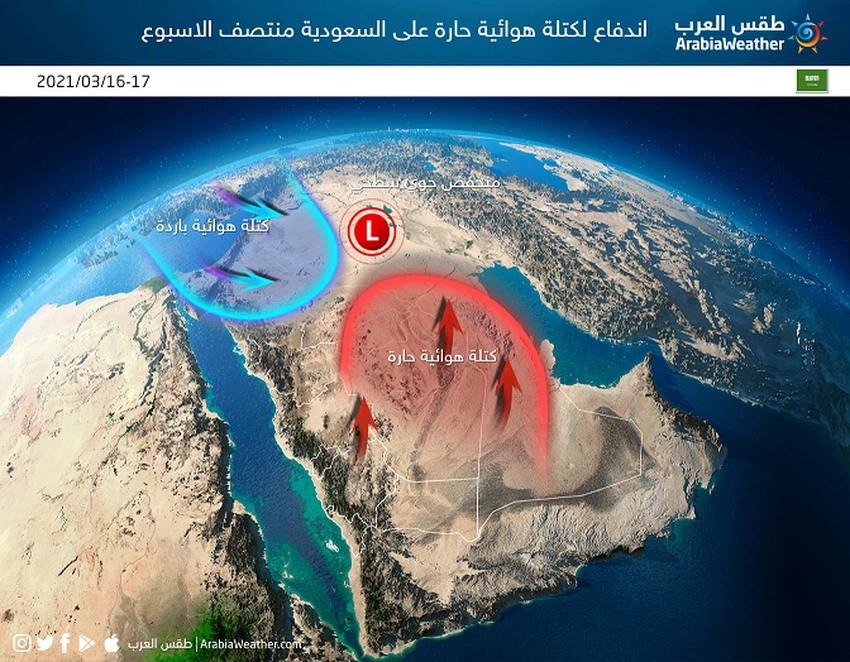Saudi Arabia | New hot block and high temperatures in Riyadh and Al-Sharqiya in the second half of this week
Arab Weather - Sinan Khalaf - The latest weather forecast issued by the regional "Arab Weather" Center indicates that the eastern and central regions of the Kingdom are affected by a hot and dry air mass, God willing, working to raise temperatures sharply and significantly in the eastern and central regions of the Kingdom, including the capital Riyadh and Dammam.
Significant rise in heat
A hot air mass is pushing towards the area
In details, it is expected that the hot air mass will directly affect the capital, Riyadh, during the second half of this week, and it is expected that the rise in temperature will be gradual from Monday, so that the maximum temperature will reach its peak on Wednesday and Thursday, when the maximum is expected to be between 36- 37 degrees Celsius.

The eastern region of the Kingdom, such as Dammam, Qatif and Jubail, is affected by relatively high temperatures, while it rises significantly in Al-Ahsa to exceed 40 Celsius at the end of the week.
Arabia Weather App
Download the app to receive weather notifications and more..



